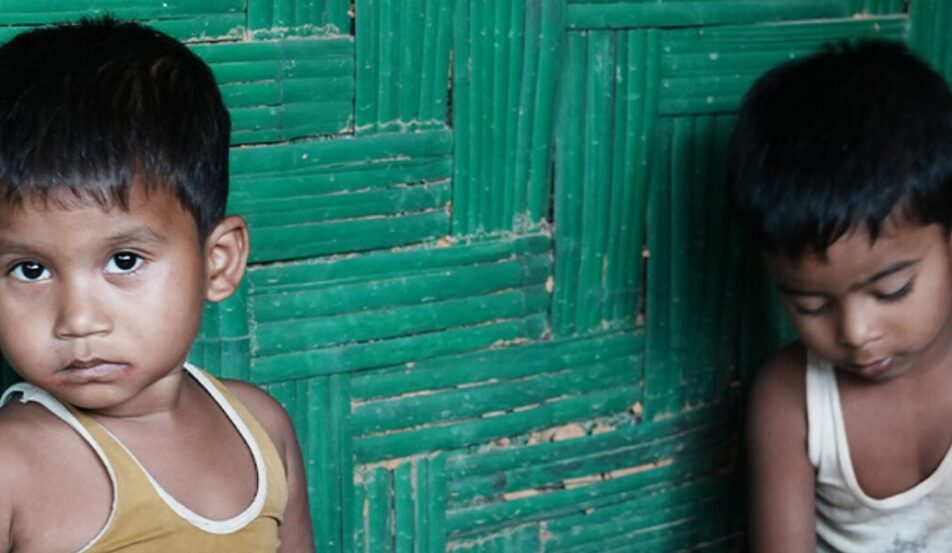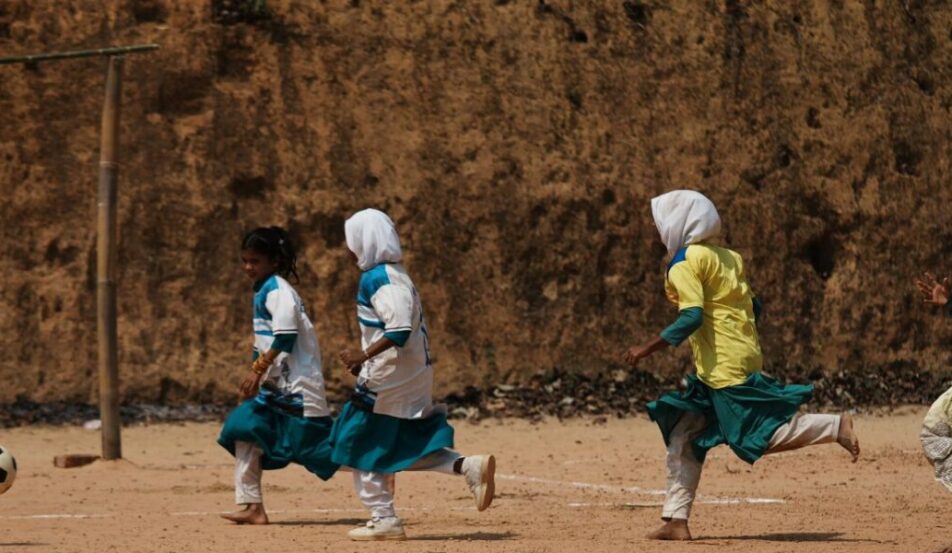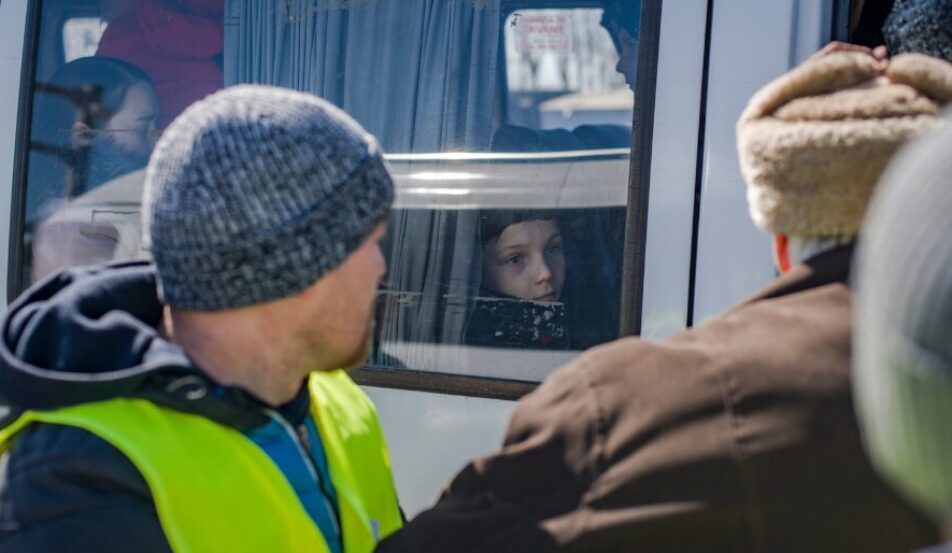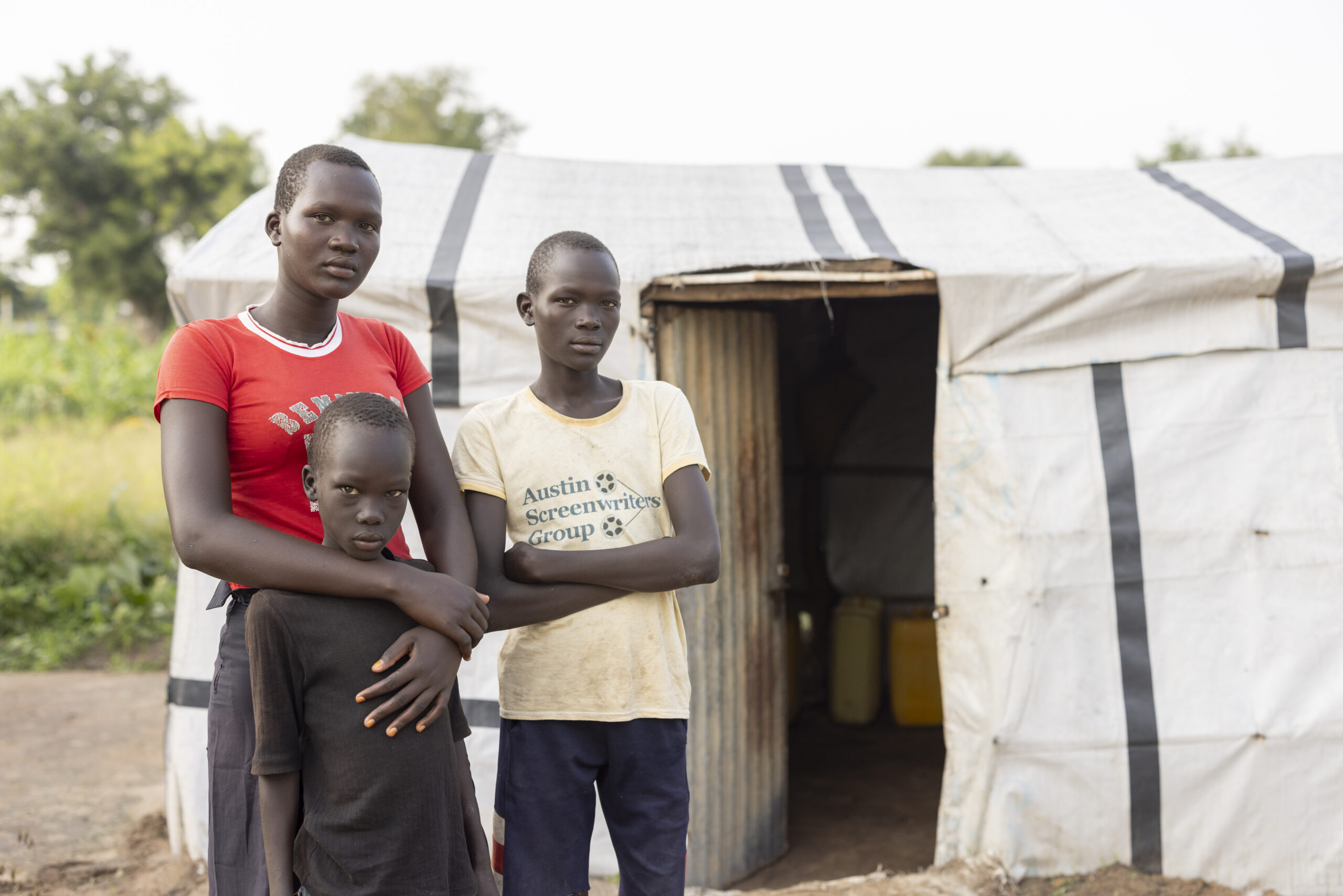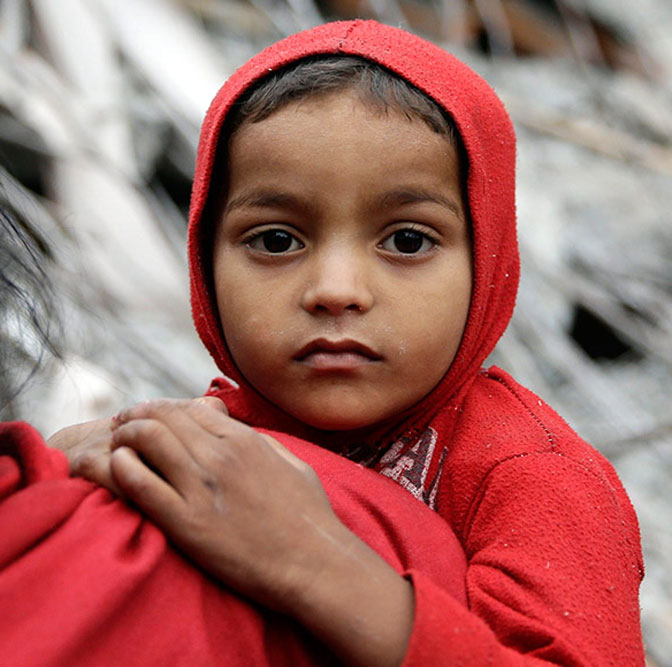Facts about refugee camps
As conflicts and humanitarian crises continue to affect children, families and communities around the world, many people are seeking answers and asking questions. One of the most talked-about issues is refugees—what makes someone a refugee, the purpose of refugee camps, and what happens to them now. Misconceptions and uncertainties about refugees are widespread, and to better support them, it is important to gain an understanding of their daily realities and resilience. Below are some key facts and statistics about refugee camps to help keep you informed.
- Global Refugee Statistics
- Understanding Refugee Camps
- What is life for child refugees like in the camps?
- Join ChildFund in supporting refugees globally
Facts about refugee camps: FAQs, and how to help
Global refugee statistics
What is a refugee? A refugee is an individual who has fled their home country due to fear of persecution, violence, or conflict. Refugees escape war, political oppression, religious discrimination, or any other form of discrimination.
Learn more about the definition of a refugee here.
Refugee facts by the numbers
- There are 36.4 million refugees in the world. Among them, nearly 40% are children under 18 years of age.
- Over half of all refugees come from just three countries: Ukraine, Syria and Afghanistan.
- There are 15 million refugee children of school age. Over 7 million are out of school.
- Iran is the top refugee-hosting country with approximately 3.4 million refugees.
Understanding Refugee Camps
The purpose of refugee camps is to provide immediate safety during crises and serve as a bridge until permanent solutions (such as resettlement) are found. They protect the health, safety and wellbeing of people who have been forced to flee their homes because of violence and persecution.
Accommodations offered to refugees vary from region to region and country to country. Most refugee camps provide basic necessities such as:
- food
- water
- shelter
- healthcare; and
- Child-Friendly spaces with playgrounds and classrooms.
Refugee camps can create a sense of community and belonging among refugees attempting to restart their lives in a new place. These camps require aid from local and international humanitarian agencies, NGOs, and governments to function effectively. This support is especially crucial when mass displacement persists for five years or more, such as in protracted refugee situations. Refugees may spend several years, or even decades, residing in camps, with multiple generations growing up in such places. Educational and livelihood opportunities are often made available in these circumstances to provide them with the best possible chance to rebuild their lives
Refugee camp statistics
- An estimated 6.6 million people live in refugee camps.
- Approximately 2 million people are sheltered in self-settled camps, while the remaining 4.5 million reside in planned and managed camps.
- Bangladesh is home to the world’s largest refugee camp, known as Cox’s Bazar, with more than 960,000 people.
On average, refugees in camps are 36 % more likely to live below the national extreme poverty line, meaning that they find it difficult to meet daily basic needs.
What is a basic daily need?
The challenges within refugee camps—such as overcrowding, limited resources and health risks—are significant. Although camps are designed to offer protection and refuge, given their design and purpose – makeshift shelters often built in little time or crowded apartments in cities – there are many risks and dangers. Life in a refugee camp involves constant insecurity and fear, not knowing what tomorrow will bring.
These are some of the daily realities people face living in refugee camps:
Yet, despite hardships, there is incredible resilience and resourcefulness within the camps. It is not uncommon for refugees to create makeshift schools, gardens, and small businesses – things we may take for granted in our daily lives but provide hope to children and their families within the camps.
- Crowded Tents: Shelters in refugee camps have limited space, which often can’t accommodate the hundreds of thousands of people who seek refuge there. As a result, families may live in cramped spaces with insufficient roofing (tarps as makeshift ceilings, for example) and no doors or heating. This lack of proper infrastructure increases the risk of pneumonia and other respiratory infections, particularly in colder weather.
- Poor Sanitation: Refugee camps frequently experience a shortage of clean water and adequate hygiene facilities, including proper toilets. Consequently, individuals living in these camps are at an increased risk of contracting diarrheal diseases such as cholera. This risk is further exacerbated by the limited, and often entirely absent, medical supplies in the camps.
- Food Rations: Refugees typically rely on aid organisations for sustenance, but access to sufficient food is not guaranteed. In many cases, people living in the refugee camps go to bed hungry due to inadequate food supplies. The available food often lacks essential nutrients, which results in children frequently suffering from malnourishment.
- Threats to safety: Physical violence and abuse (including gender-based sexual violence) are widespread in camps and often has long-lasting ramifications on a survivor’s mental and physical wellbeing.
What is life for child refugees like in the camps?
Every year, millions of children around the world are displaced due to war and violence. This leaves them with no choice but to seek safety in refugee camps. Some spend their entire childhood and young adulthood in these camps, never knowing a life beyond it. Others, like Mary*, are forced to adapt to a new reality and grow up faster.
A refugee camp is a hard, dangerous place to be a child
Mary was 12 when she and her family were forced to flee their home in war-torn South Sudan. Within a year, she had stopped going to school, lost both her parents, and was left to take care of her two younger brothers all by herself.
Like so many children in refugee camps, Mary, now 17, has experienced tragedy beyond her years. Her father died in South Sudan’s conflict and upheaval, and her mother abandoned Mary and her siblings shortly after they fled to Uganda’s Palorinya refugee camp. Mary lost crucial years of learning living in the camp, working herself to exhaustion to put food on the table and keep her brothers in school. She is one of the 1,600 child-headed households in Palorinya.
Children and young refugees, such as Mary and her brothers, face unique vulnerabilities due to their displacement and challenging circumstances. These include:
Trauma and Stress
- Forced Displacement: The experience of fleeing conflict, violence, or persecution can cause immense trauma, anxiety, and depression for children who are suddenly uprooted, without their comforts and forced to grow up before their time – all with little to no access to mental health services.
- Loss of Home and Family: Separation from family members and familiar surroundings adds to their distress.
- Uncertainty: Higher education and employment opportunities can be non-existent for children, young people and their families living in refugee camps. The uncertainty of their future exacerbates stress and anxiety.
Health Challenges
- Sanitation and Hygiene: Poor WASH facilities (Water, Sanitation and Hygiene) increase health risks, including the transmission of diarrhoeal diseases such as cholera and dysentery, typhoid, intestinal worm infections, and polio. Unsafe sanitation is a leading risk factor for child deaths in refugee camps.
- Access to Healthcare: Refugee children often struggle to access adequate healthcare services, so they don’t receive regular health check-ups or medical support when needed.
- Malnutrition: Limited food availability and poor nutrition impact their physical health and can lead to stunting.
- Mental Health: Exposure to violence and displacement increases the risk of mental health problems. The uncertainty surrounding their futures can also lead to feelings of hopelessness.
Education Disruptions
- Interrupted Education: Many refugee children miss out on formal education due to displacement. Children and young people, especially girls, may trade school for long days of manual labour so they can help feed their families.
- Language Barriers: Adapting to a new language and education system can be challenging.
- Limited Resources: Lack of textbooks, schools, and qualified teachers hinders their learning.
Protection Risks
- Inadequate Housing: Crowded refugee camps or temporary shelters lack privacy and protection from environmental factors (cold weather, natural disasters) and sexual predators (many don’t have doors let alone locks). Without proper infrastructure, children in the camps are exposed to health and safety risks that, in some cases, can lead to early death or have a lasting psychological and physical impact on their wellbeing.
- Exploitation: Refugee children are vulnerable to child labour, child marriage, trafficking, and sexual exploitation.
- Violence and Abuse: Exposure to violence within camps or during the journey.
- Child Soldiers: Both government forces and armed groups have been known to recruit children to fight in conflict, putting them in harm’s way and robbing them of their childhood.
Legal Vulnerabilities
- Lack of Legal Status: It is common for refugee children, especially those born in camps, to be denied legal identity. This often leads to them being referred to as ‘stateless’ or ‘undocumented’ persons, which in turn makes it difficult for them to access education, healthcare, and, as adults, marriage and employment opportunities throughout their lives. In some cases, they may not even receive an official burial or a death certificate when they pass away.
- Asylum Process: Navigating complex legal procedures to obtain legal protection can be lengthy and overwhelming for children and their families, especially if the process is in another language.
Loss of Childhood, Community and Identity
- Responsibilities: Refugee children often take on adult roles to support their families. This includes finding employment opportunities, working in fields, cooking and cleaning, and taking care of younger siblings.
- Play and Recreation: Limited opportunities for play and recreation impact their social and emotional wellbeing.
- Loss of Identity: Displacement disrupts their sense of belonging as they are away from their cultural context and social networks.
- Social Exclusion: Negative perceptions of refugees can result in exclusion and discrimination for children, while their separation from familiar communities can affect their social support.
Disrupted Family Life
- Family Separation: When refugees are forced to separate from their families, it can severely affect their mental health as well as their economic and social wellbeing. Separation is one of the primary causes of mental health issues among refugee children.
- Parental Stress: Stress and trauma experienced by parents can have lasting effects on family relationships and can lead to intergenerational trauma.
- Unaccompanied Minors: Children who are separated from their families are often forced to take on physical and financial responsibilities, which can force them to grow up quickly. In many cases, older children become the primary caregivers for younger siblings, which may mean they forgo their education to work and earn an income to support their families.
Join ChildFund in supporting refugees globally
ChildFund partners with aid organisations, such as the United Nations High Commissioner for Refugees (UNHCR) and dedicated local partners, to respond to humanitarian crises, address refugees’ vulnerabilities, and advocate for children’s rights worldwide. Understanding the complex nature of the refugee crisis is crucial in effectively addressing the challenges refugees face in camps and facilitating their integration into new societies.
Thanks to our partners’ support and donors’ generosity, we can continue raising awareness and funds to improve living conditions and protect children and families in the camps. Together, we have:
- constructed emergency latrines,
- established Child-Friendly safe spaces that encompass classrooms and playgrounds,
- set up safe spaces where women and girls can seek emotional support and protection from sexual and gender-based violence (SGBV),
- empowered men to advocate for women’s rights and prevent SGBV; and
- supplied medical resources to curb the spread of disease in the camps.
However, the need for support remains urgent. Much more needs to be done to improve the lives of vulnerable children and their families in refugee camps worldwide. Providing essential resources such as food, shelter, and healthcare can make a significant difference to life within the camp and help protect the childhood and future of refugee children.
Find out how you can help protect refugees today and improve living conditions within refugee camps.
*Names have been changed to protect individuals’ identities.



